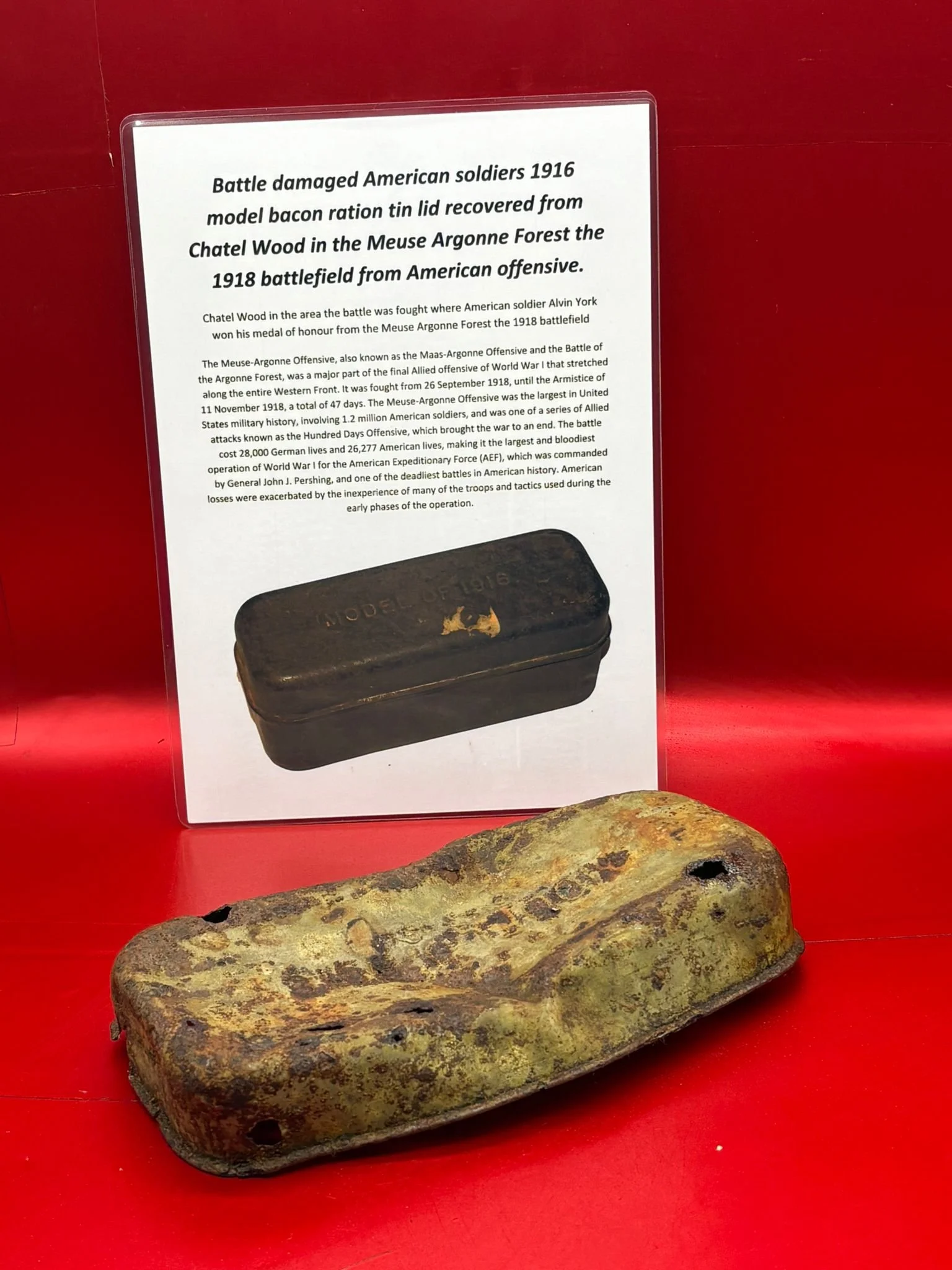 Image 1 of 8
Image 1 of 8

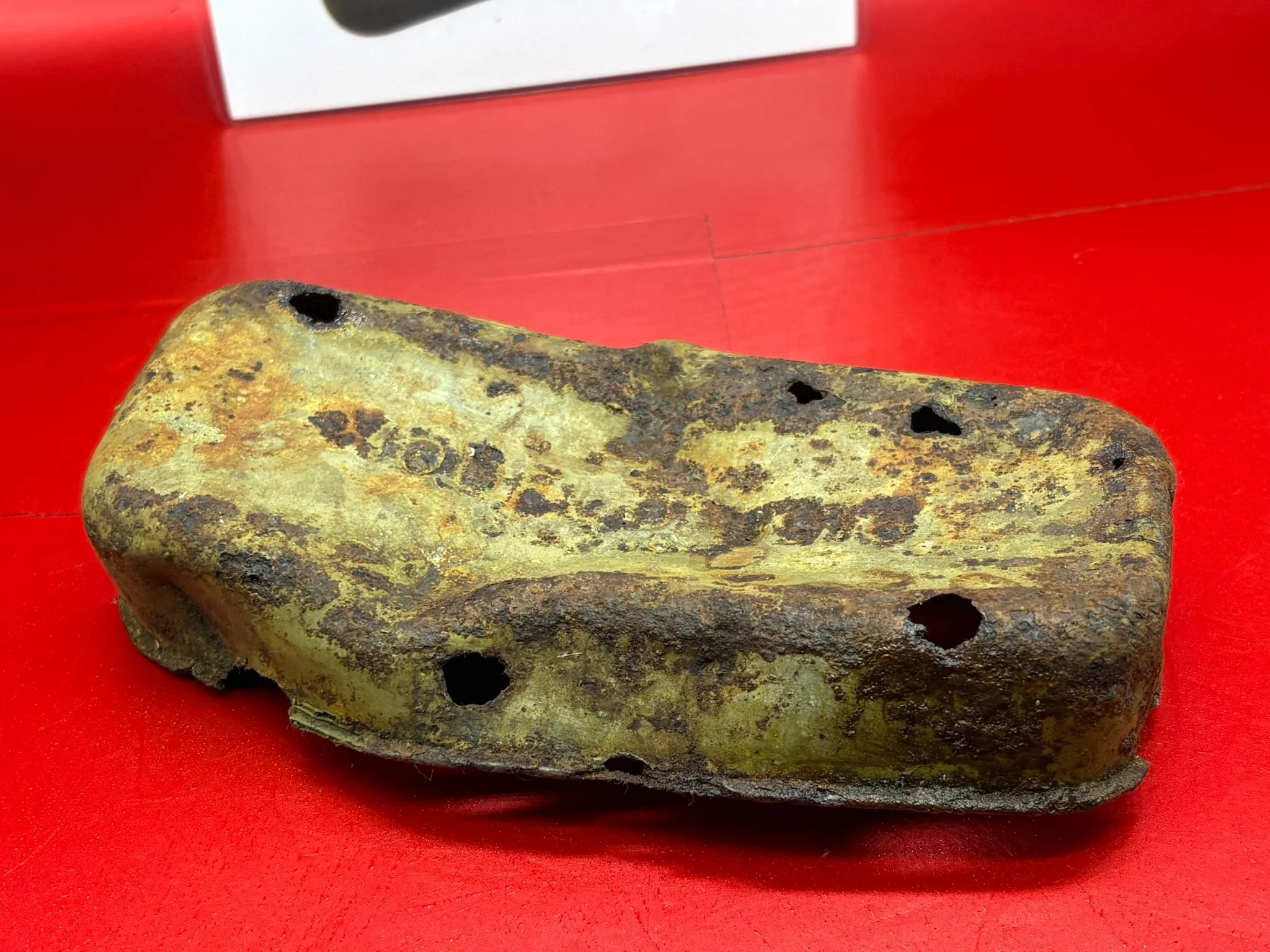 Image 2 of 8
Image 2 of 8

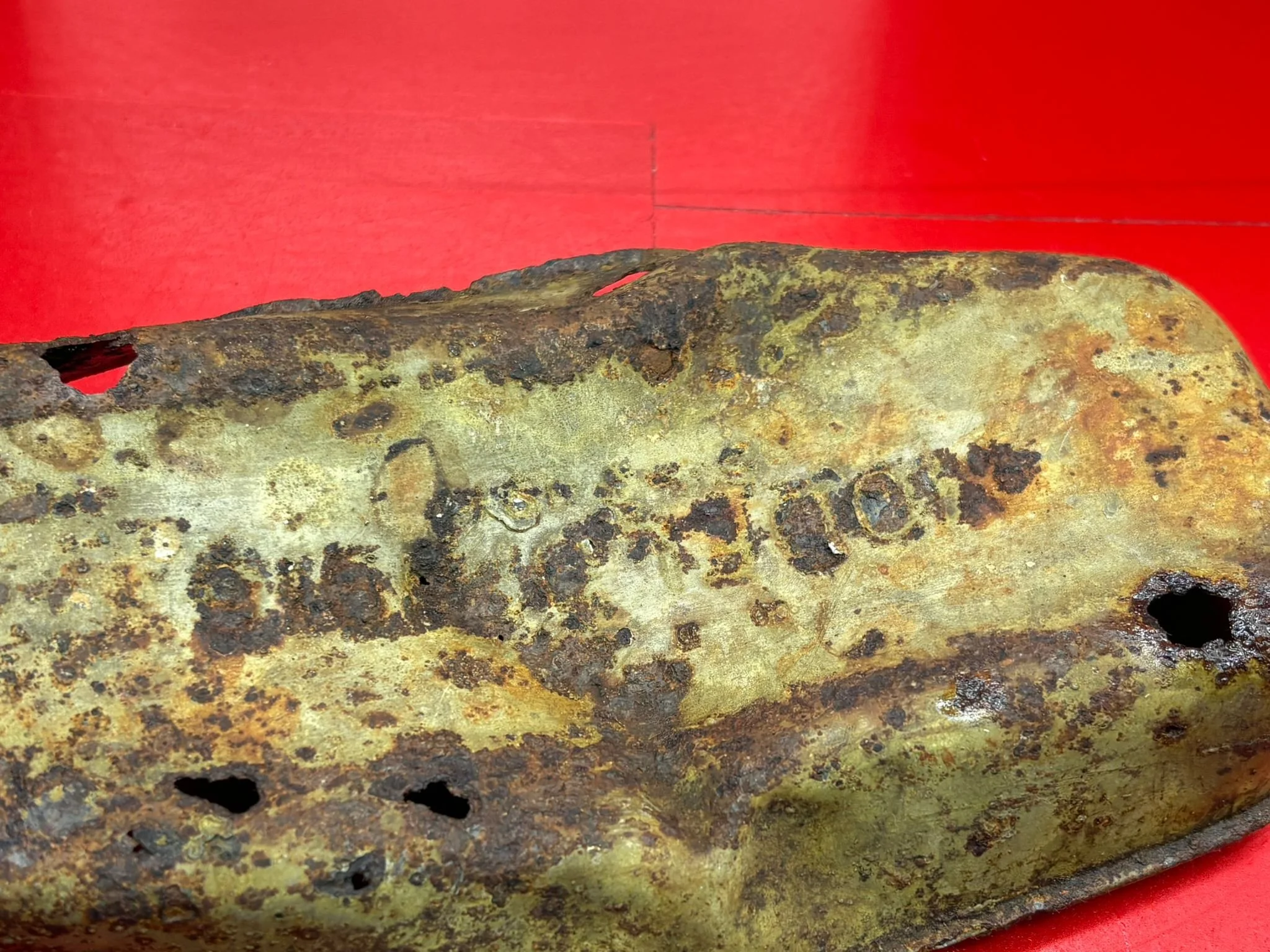 Image 3 of 8
Image 3 of 8

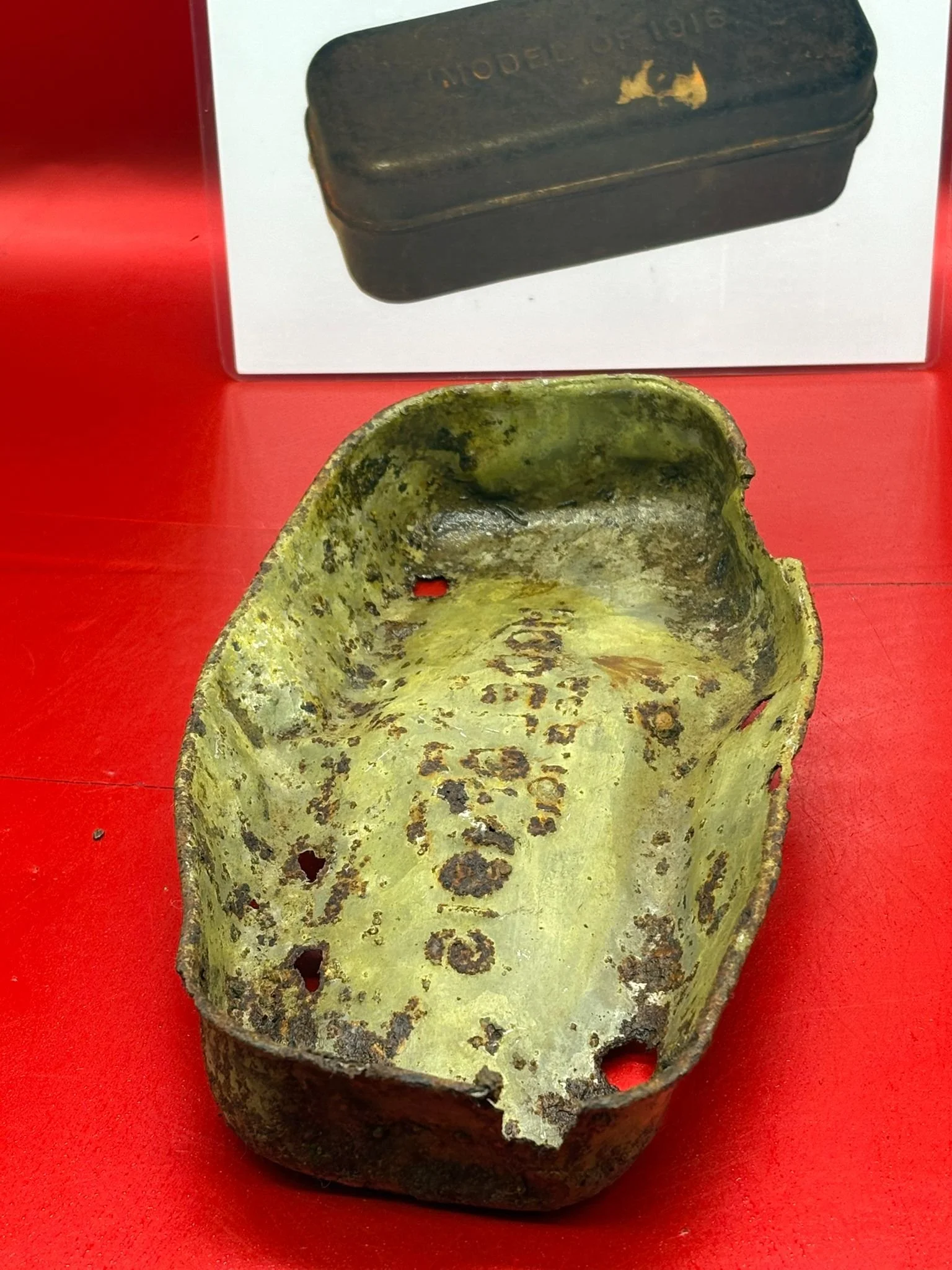 Image 4 of 8
Image 4 of 8

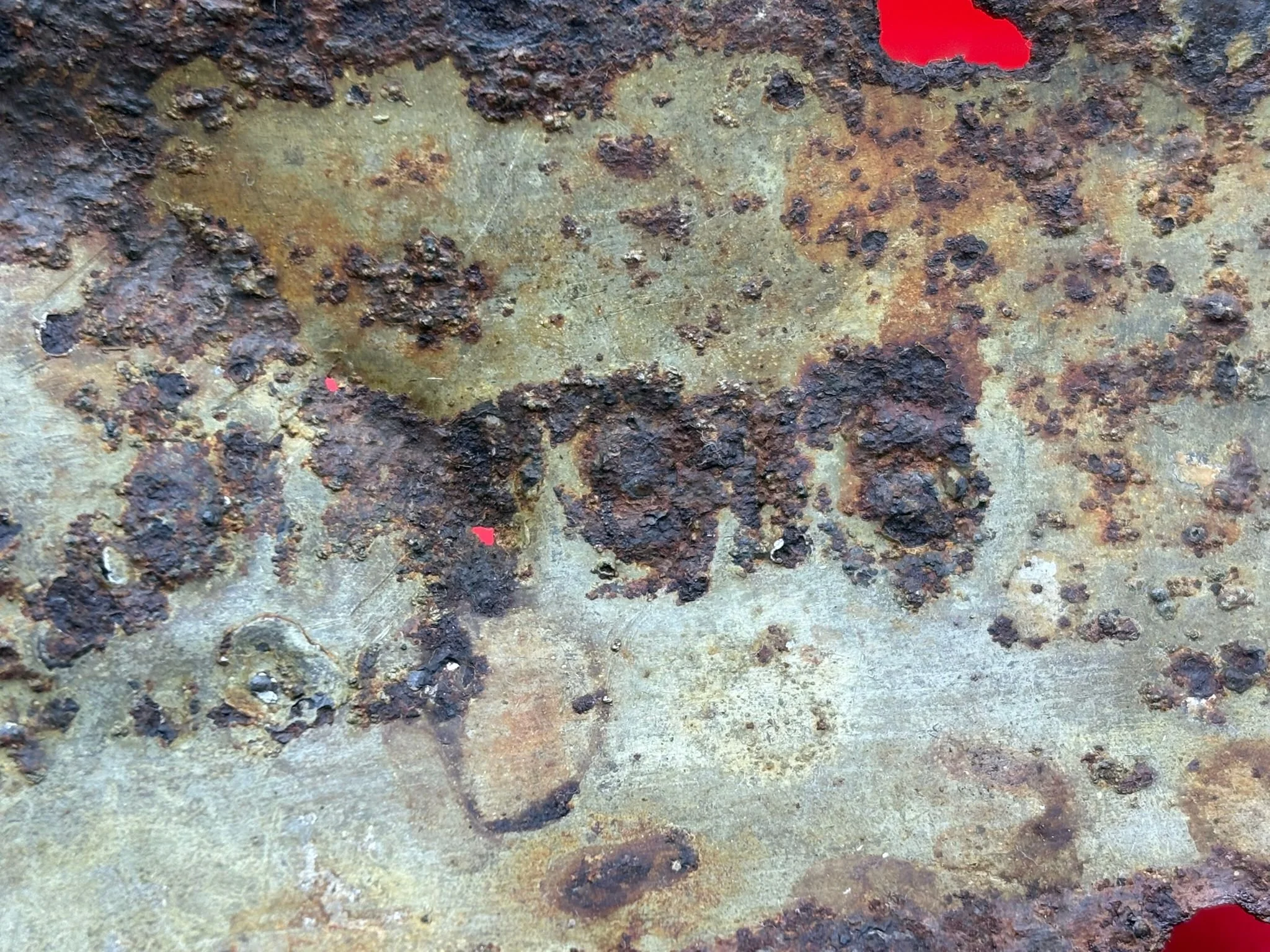 Image 5 of 8
Image 5 of 8

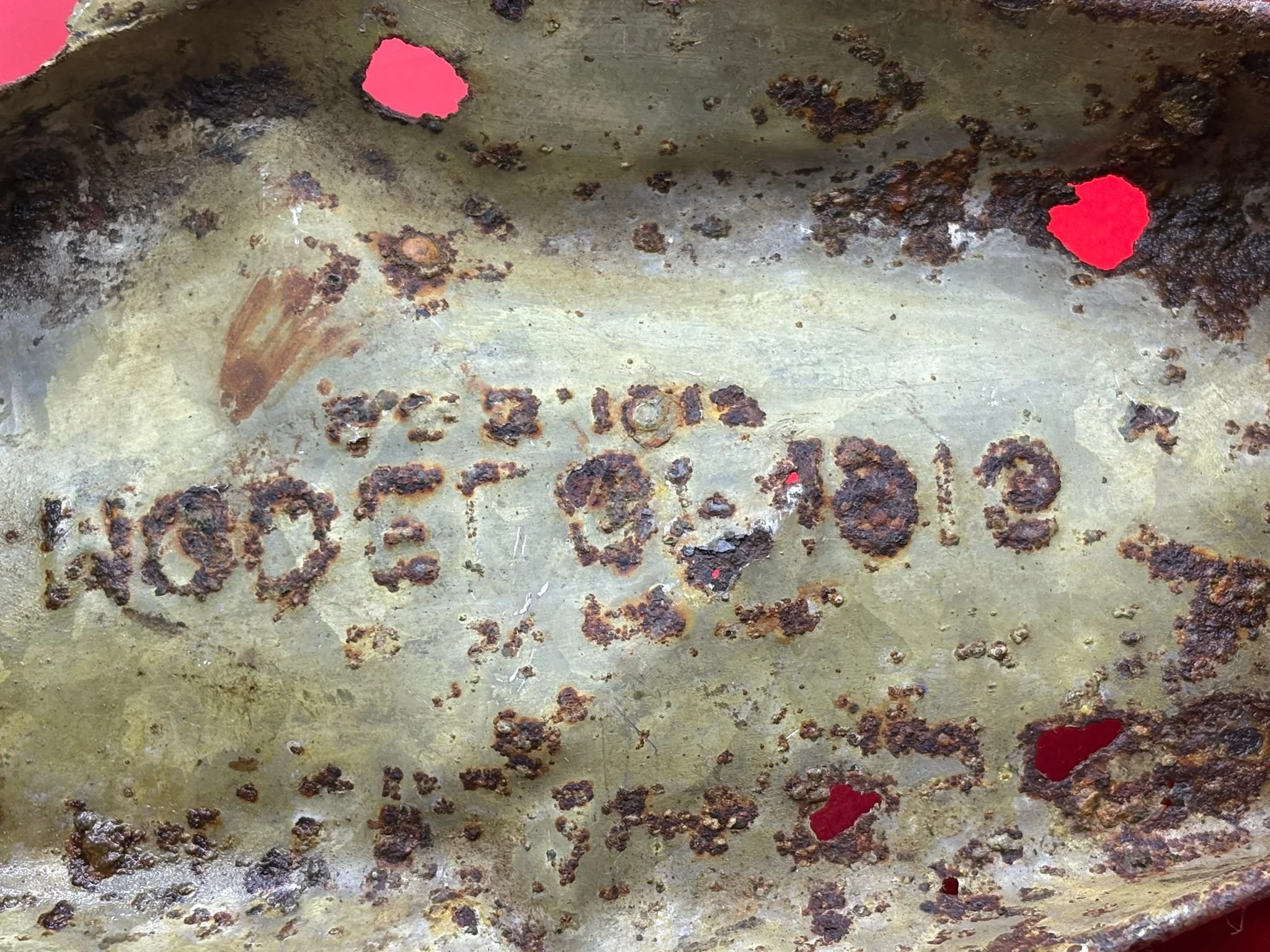 Image 6 of 8
Image 6 of 8

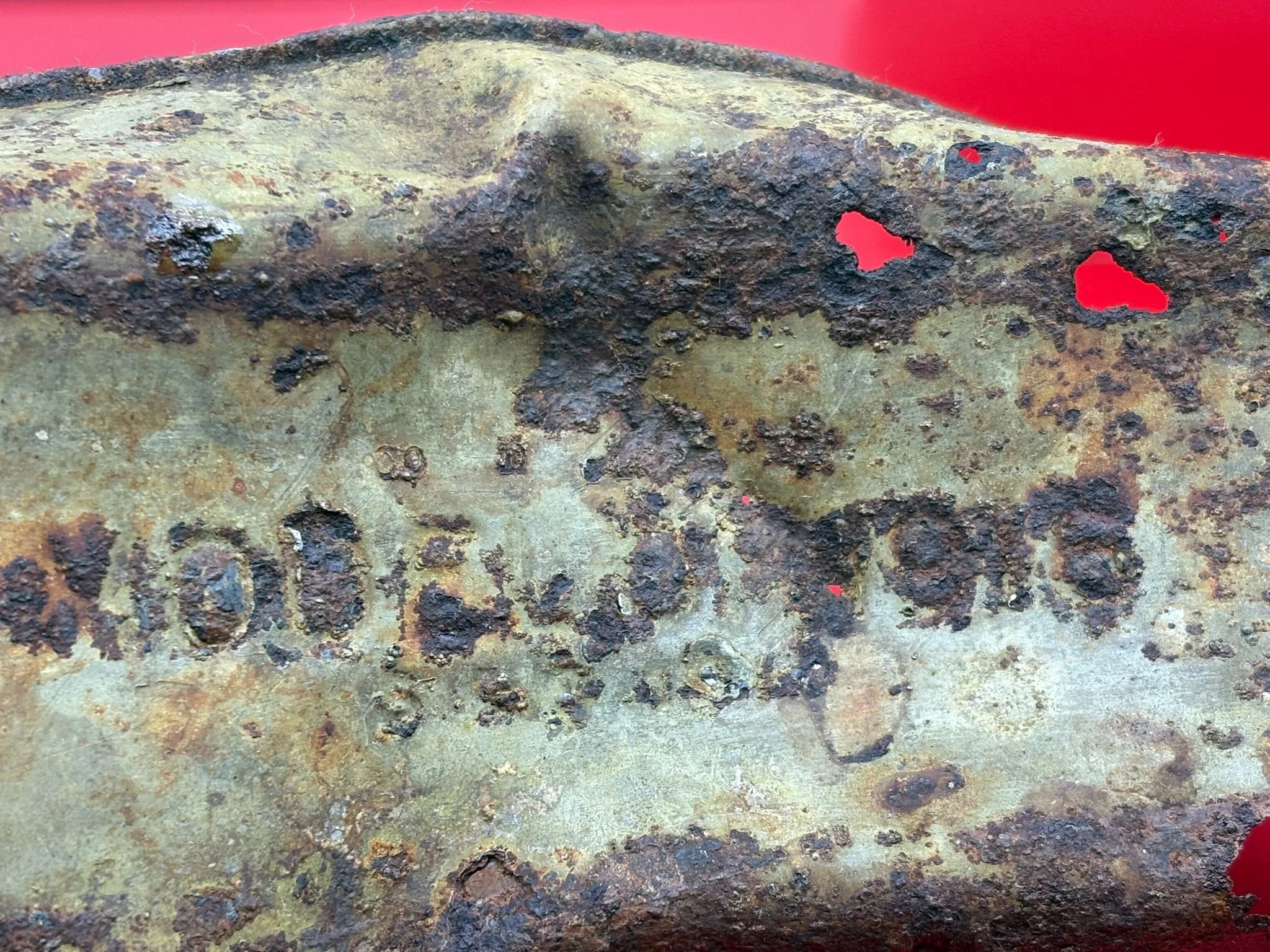 Image 7 of 8
Image 7 of 8

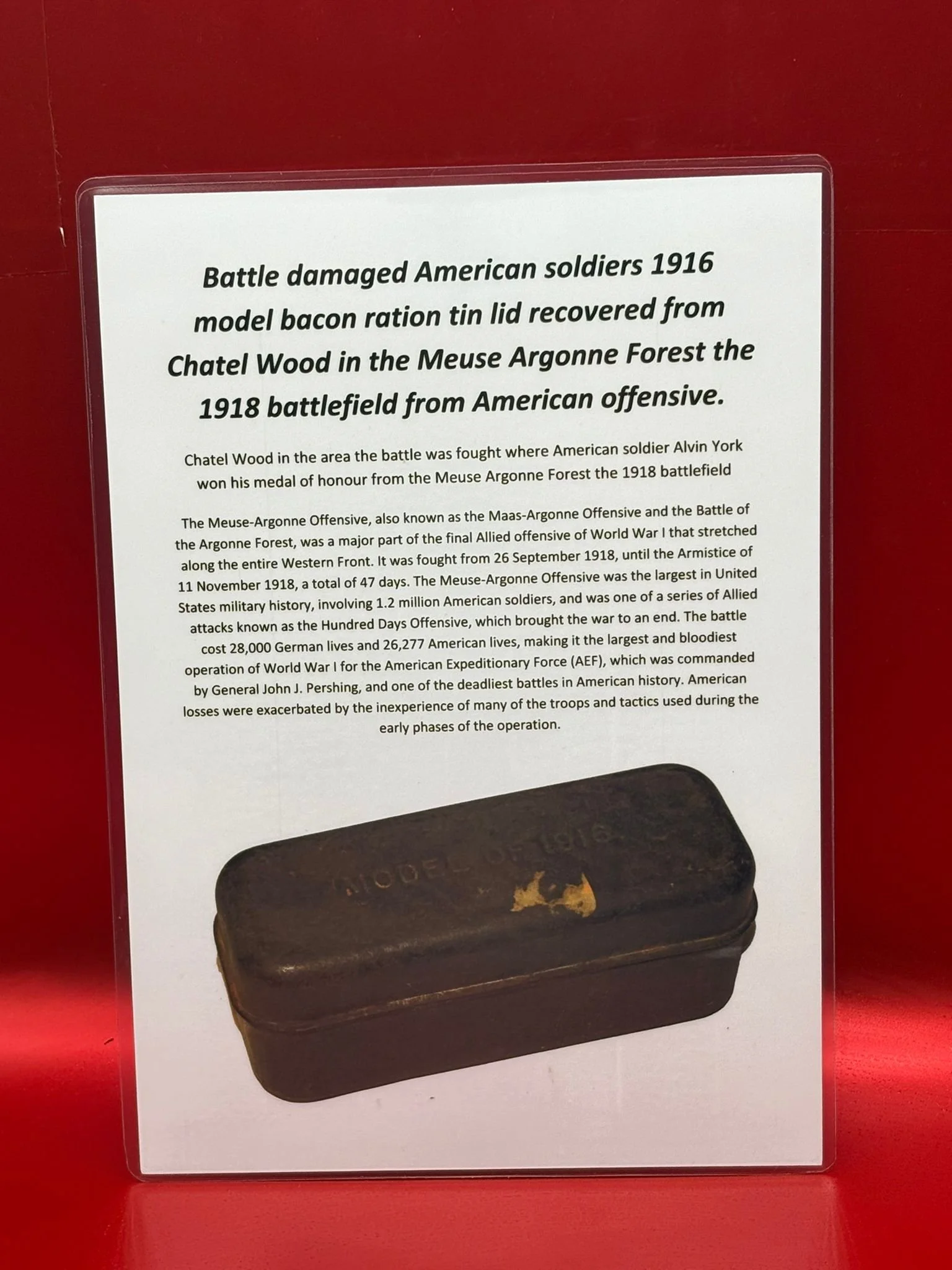 Image 8 of 8
Image 8 of 8









Battle damaged American soldiers 1916 model bacon ration tin lid recovered from Chatel Wood, located within the Meuse-Argonne Forest, the site of fierce American fighting in 1918
This is a battle-damaged American soldiers bacon ration tin lid, dated 1916, from a Model 1916 issue. The lid still retains a significant amount of its original green paint, with maker markings and a clear 1916 date stamp still visible. It has been bent and misshapen from an impact hit, likely sustained during combat, adding character and authenticity to the piece.
Despite the surface rust, the lid remains solid and stable, with no signs of crumbling. It has been carefully cleaned, revealing much of the original paintwork. Measuring 7 inches in length, it is in excellent condition for a relic, making it ideal for display or any serious WWI collection.
This lid was recovered from Chatel Wood, located within the Meuse-Argonne Forest, the site of fierce American fighting in 1918. The area witnessed heavy casualties as U.S. forces pushed back well-entrenched German positions in one of the most significant battles of the First World War.
The item includes an A5 laminated information card with historical context and photographs.
Historical Background The Meuse-Argonne Offensive:
Also known as the Battle of the Argonne Forest, the Meuse-Argonne Offensive was a key part of the final Allied push on the Western Front. Fought between 26 September and 11 November 1918, it lasted 47 days and was the largest American military operation of World War I, involving 1.2 million U.S. troops.
This offensive formed part of the broader Hundred Days Offensive, which ultimately led to the end of the war. Commanded by General John J. Pershing, the American Expeditionary Force (AEF) played a central role in the campaign. The battle was one of the deadliest in American history, with 26,277 American and 28,000 German soldiers killed. Heavy U.S. losses were partly due to the inexperience of American troops and outdated tactics used in the early phases of the assault. This tin lid is a rare and powerful relic from this iconic and decisive chapter in World War I history
This is a battle-damaged American soldiers bacon ration tin lid, dated 1916, from a Model 1916 issue. The lid still retains a significant amount of its original green paint, with maker markings and a clear 1916 date stamp still visible. It has been bent and misshapen from an impact hit, likely sustained during combat, adding character and authenticity to the piece.
Despite the surface rust, the lid remains solid and stable, with no signs of crumbling. It has been carefully cleaned, revealing much of the original paintwork. Measuring 7 inches in length, it is in excellent condition for a relic, making it ideal for display or any serious WWI collection.
This lid was recovered from Chatel Wood, located within the Meuse-Argonne Forest, the site of fierce American fighting in 1918. The area witnessed heavy casualties as U.S. forces pushed back well-entrenched German positions in one of the most significant battles of the First World War.
The item includes an A5 laminated information card with historical context and photographs.
Historical Background The Meuse-Argonne Offensive:
Also known as the Battle of the Argonne Forest, the Meuse-Argonne Offensive was a key part of the final Allied push on the Western Front. Fought between 26 September and 11 November 1918, it lasted 47 days and was the largest American military operation of World War I, involving 1.2 million U.S. troops.
This offensive formed part of the broader Hundred Days Offensive, which ultimately led to the end of the war. Commanded by General John J. Pershing, the American Expeditionary Force (AEF) played a central role in the campaign. The battle was one of the deadliest in American history, with 26,277 American and 28,000 German soldiers killed. Heavy U.S. losses were partly due to the inexperience of American troops and outdated tactics used in the early phases of the assault. This tin lid is a rare and powerful relic from this iconic and decisive chapter in World War I history
